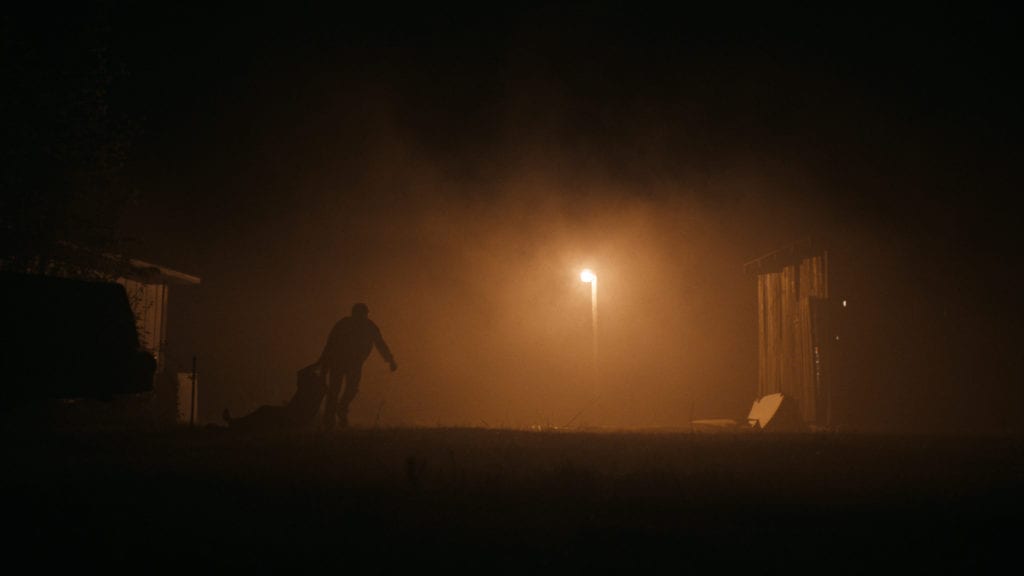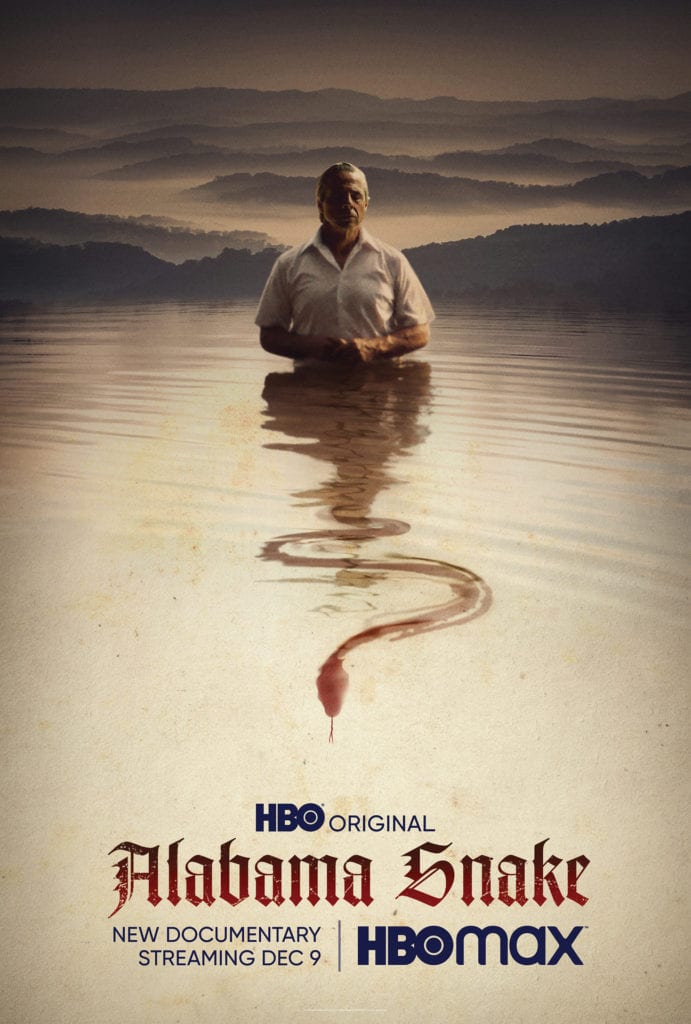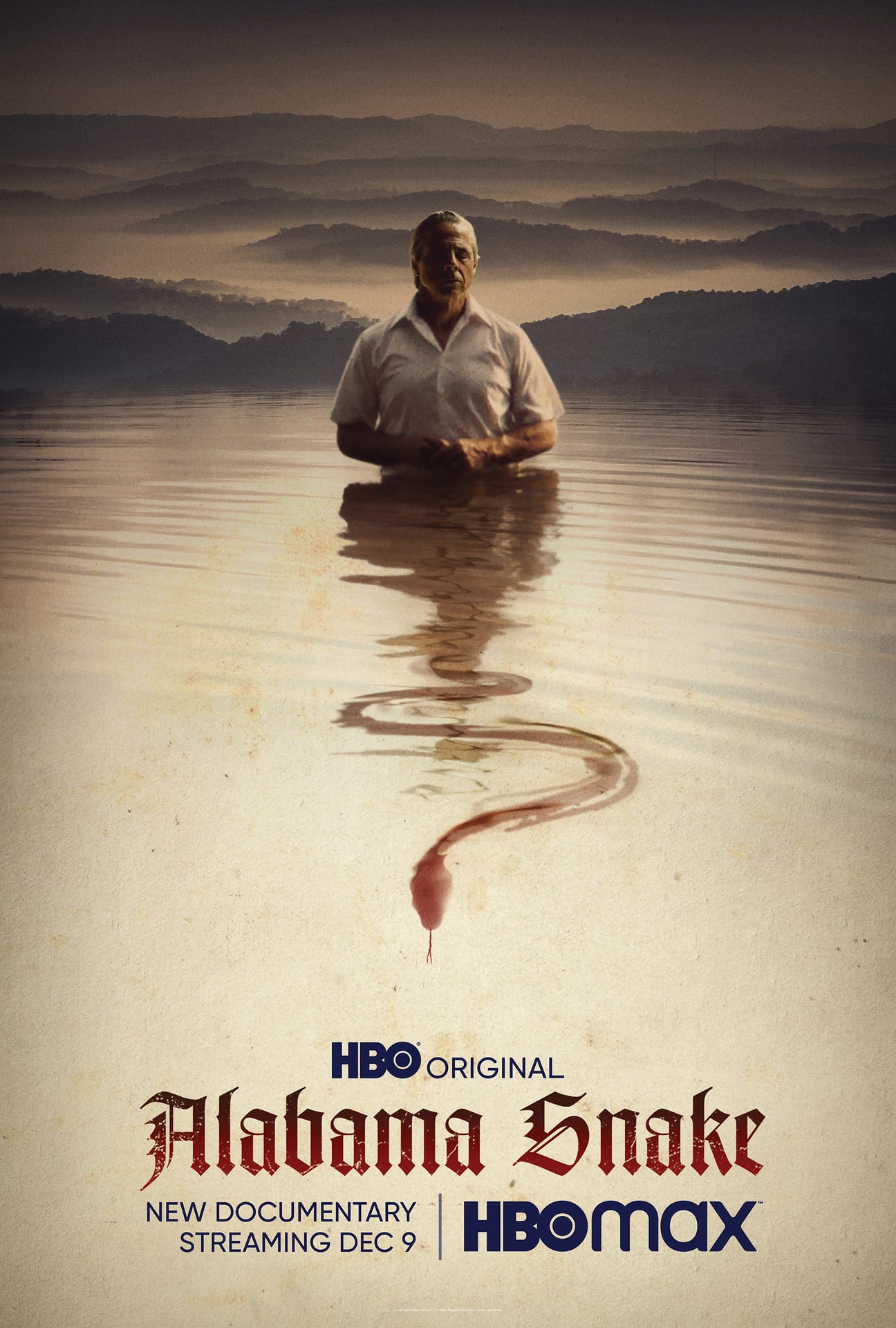?Do you think we believe what we want??
?It may be the other way around; we believe things whether we want to or not.?
Theo Love?s true crime doc Alabama Snake is a search for truth amidst conflicting accounts. Finding the truth may rest more on what we believe and what we believe about the people involved than on what facts we come across. It could also be that those involved have come to believe their stories whether they are factual or not.

On October 4, 1991, a crime was reported in Scottsboro, Alabama. EMTs went to a rural home and found Darlene Summerford in very grave condition from a snakebite. She managed to survive, but soon thereafter her husband Glenn was arrested for attempted murder. Glenn Summerford was the pastor at a Pentecostal church that included snake handling. He kept various snakes in the home. Darlene?s story is that Glenn forced her to put her hand in the cage of one of the snakes. Glenn says Darlene was trying to kill herself. Can we tell who is telling the truth?
The story is related with conversations with witnesses to the events and through reenactments. Much of the film is based on research done by Dr. Thomas G. Burton, a now retired academic who had a particular interest in Appalachian life. Among those we meet as this tale unfolds are the paramedics who responded to the emergency call; the current police chief in Scottsboro, who was a young officer at the time; the lead investigator in the case, now retired; the court reporter from Glenn?s trial; Glenn?s first wife, Doris; and Glenn and Darlene?s son, Marty. We also hear Darlene tell her story on camera, and hear Glenn?s version on tapes that Dr. Burton made in his study of the story. Burton also gives us insight into the culture of snake handling churches.
The film is essentially a true crime film, but because of the religious aspects of the story, we do learn a bit about the practice and the biblical reasons for it. These religious aspects are presented without judgments as to their appropriateness or critical biblical understanding. The idea of handling snakes in churches is based in the textually dubious Longer Ending of the Gospel of Mark (Mark 16:9-20). For those outside the Holiness and Pentecostal tradition, the scenes of snake handling may seem bizarre, but for some this is an important expression of faith.

Another religious aspect deals with Glenn Summerford?s life story. Glenn had a history of violence and brawling. But about halfway through the story, he finds redemption and new life. We are told that his life changed, but we may also see evidence that there was little change, that he continued to act violently, especially when drinking. When we hear Glenn tell his version of events, he continues to speak with a faith-filled understanding of events, even as he sees himself wrongly accused.
Is this story anything other than a look into an obscure religious practice that is mostly (although not totally) confined to poor rural areas? Actually, it is hardly that at all. These religious traditions are really only the backdrop into the search for truth in the crime story. Searching for truth is often more than just about facts. It can also be about which sets of facts we are willing to accept and for what reason. Are we more likely to believe or disbelieve people who view handling snakes as a gift given them by the Holy Spirit? Do we judge them by their pasts, or by their socioeconomic situations?
Perhaps a key question we should ask ourselves in watching a film like Alabama Snake is where we see ourselves and our own understandings of faith. As Dr. Burton says in the prologue to the film, ?I find that in collecting their life stories, traditions, and beliefs, it?s really one way of understanding our own history.?

Alabama Snake is available on HBO.
Photos courtesy of HBO.
FilmReviews




